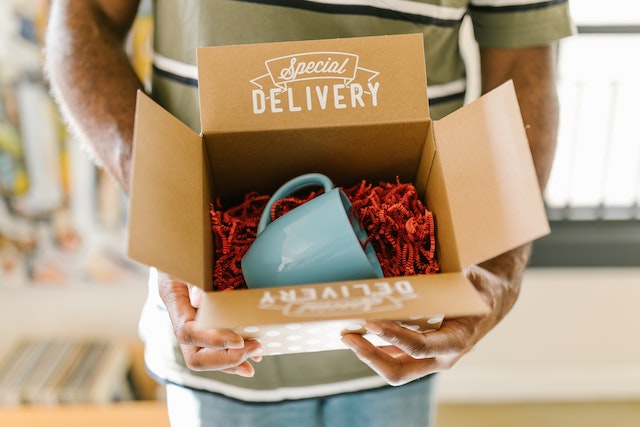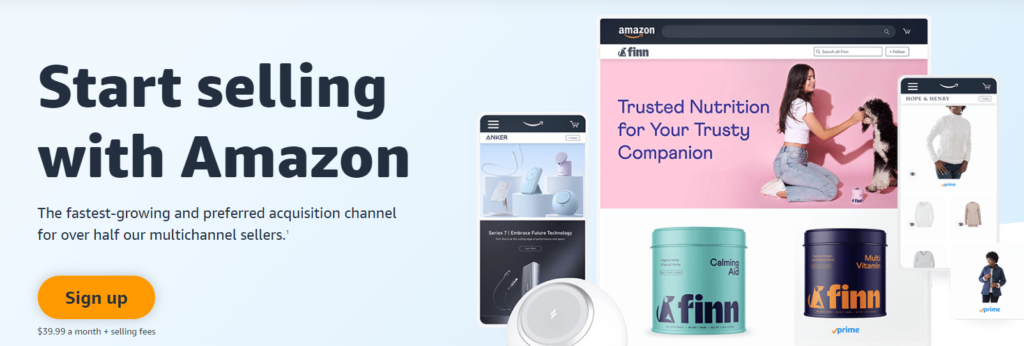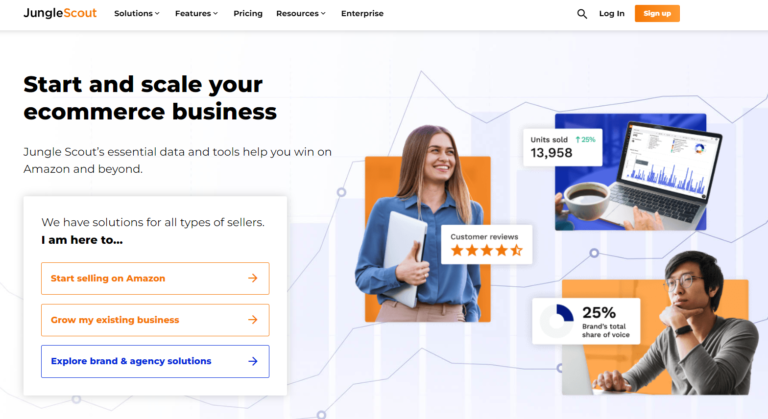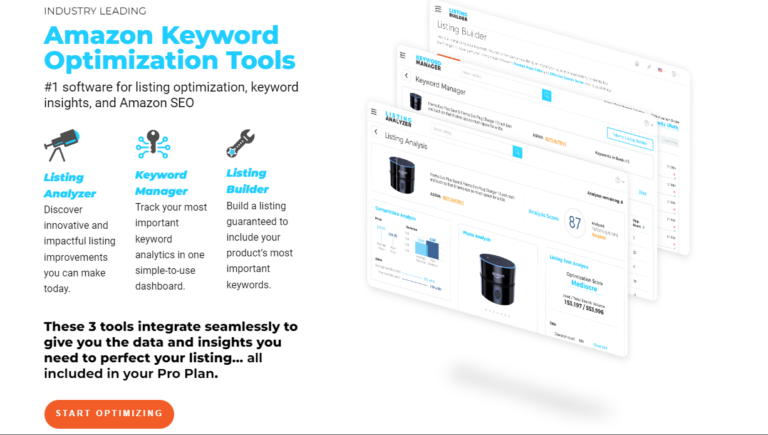Dropshipping vs Amazon FBA: Which One Should You Choose?
As an entrepreneur looking to start an e-commerce business, there are several ways to get your products to customers without physically owning or storing inventory.
Two popular methods are dropshipping and Amazon FBA. In this article, we will compare and contrast the two business models to help you decide which one is right for you.
What Is Dropshipping?

Dropshipping is a retail fulfillment method where the seller does not keep the products in stock. Instead, the seller purchases products from a third-party supplier, who then ships the product directly to the customer. The seller never sees or handles the product, but they are responsible for marketing and customer service.
How Does Dropshipping Work?
Here’s how dropshipping works:
- The seller opens up a shop online and stocks it with the wholesaler’s wares.
- A purchase is made by the buyer from the seller’s online store.
- The order is transmitted to the manufacturer by the retailer.
- The vendor sends the goods straight to the buyer.
The seller makes a profit by selling the product at a higher price than they paid the supplier. The profit margin is typically lower than other methods of e-commerce, as the seller does not have to invest in inventory or warehousing.
Pros and Cons of Dropshipping
Pros
- Low startup costs: Dropshipping does not require a large initial investment in inventory or warehousing.
- Easy to start: Anyone can start a dropshipping business with minimal technical knowledge or experience.
- Wide selection of products: With no inventory to manage, sellers can offer a wide variety of products to customers.
- Location-independent: Dropshipping can be done from anywhere in the world with an internet connection.
Cons
- Low-profit margins: As the seller does not own or store inventory, profit margins can be slim.
- The seller has no control over the product’s quality or condition during delivery because the supplier is responsible for handling that aspect of the transaction.
- Delivery times may be lengthier than with other forms of online shopping since the product must be transported directly from the manufacturer.
- Due to the high volume of businesses offering similar services, the dropshipping industry is very competitive.
What Is Amazon FBA?

Amazon FBA (Fulfillment by Amazon) is a service offered by Amazon that allows sellers to store their inventory in Amazon’s warehouses. Amazon then picks, packs, and ships the products to the customer, as well as handles customer service and returns.
Best Tools For Amazon FBA Top Jungle Scout Alternatives
How Does Amazon FBA Work?
The Amazon FBA process is as follows:
- The vendor ships their stock to Amazon’s storage facilities.
- A purchase is made by the buyer from the seller’s online store.
- Amazon does the picking, packing, and shipping.
- Returns and customer assistance are handled by Amazon.
By charging more for the item than they initially invested, less Amazon’s storage and shipment costs, the seller makes a profit.
Pros and Cons of Amazon FBA
Pros
- Prime eligibility: Products fulfilled by Amazon are eligible for Prime shipping, which can increase sales and customer satisfaction.
- Easy to scale: With Amazon’s vast customer base, it’s easy to scale and grow your business.
- Access to Amazon’s tools and services: Amazon offers a wide range of tools and services to help sellers manage and grow their businesses.
- High-profit margins: As the seller can purchase products in bulk and store them in Amazon’s warehouses, profit margins can be higher than dropshipping.
Cons
- High startup costs: As the seller needs to purchase inventory and pay for storage and fulfillment fees, startup costs can be high.
- Limited control over branding: As Amazon handles the fulfillment and shipping of the products, the seller has limited control over branding and packaging.
- Commingling inventory: Amazon has the option to commingle inventory, which means that products from different sellers can be stored together. This can lead to issues with counterfeit or damaged products.
- Competition: Amazon is a highly competitive marketplace, which means that there is a lot of competition for sales.
Detailed Comparison: Dropshipping vs Amazon FBA
Cost
Dropshipping has lower startup costs than Amazon FBA, as the seller does not need to purchase inventory or pay storage fees. However, the profit margins can be lower than Amazon’s FBA.
Amazon FBA has higher startup costs than dropshipping, as the seller needs to purchase inventory and pay for storage and fulfillment fees. However, the profit margins can be higher than dropshipping.
Time and Effort
Dropshipping requires less time and effort than Amazon FBA, as the seller does not need to manage inventory or handle fulfillment. However, the seller is responsible for marketing and customer service.
Amazon FBA requires more time and effort than dropshipping, as the seller needs to manage inventory and handle fulfillment. However, Amazon handles customer service and returns.
Control and Customization
Dropshipping offers more control and customization than Amazon FBA, as the seller can choose their suppliers and manage their own branding and packaging. However, the seller has no control over product quality or shipping times.
Amazon FBA offers less control and customization than dropshipping, as Amazon handles the fulfillment and shipping of the products. However, Amazon offers a wide range of tools and services to help sellers manage and grow their businesses.
Fulfillment
In dropshipping, the retailer contacts the manufacturer or wholesaler with the customer’s order, and the manufacturer or wholesaler sends the product straight to the buyer. Because of this, shipment timelines may lengthen and quality may be harder to monitor.
Having Amazon FBA manage product fulfillment and shipping means you can focus on growing your business instead of worrying about logistics.
Customer Service
Dropshipping requires the seller to handle customer service, which can be time-consuming and challenging. However, the seller has more control over the customer experience.
Amazon FBA handles customer service and returns, which can be convenient for the seller. However, the seller has less control over the customer experience.
Scalability
Dropshipping is easy to scale, as the seller does not need to manage inventory or fulfillment. However, competition can be high, and profit margins can be lower.
Amazon FBA is also easy to scale, as Amazon handles the fulfillment and shipping of the products. However, competition can be high, and startup costs can be higher than dropshipping.
Which One Should You Choose?
Choosing between dropshipping and Amazon FBA depends on your goals, budget, and experience.
If you have a low budget and want to start an e-commerce business quickly, dropshipping may be a good option for you. However, if you have a higher budget and want to scale your business quickly, Amazon FBA may be a better option for you.
If you want more control over your branding and packaging and don’t mind handling customer service, then dropshipping may be a better fit for you. However, if you want a more hands-off approach to fulfillment and customer service, then Amazon FBA may be a better fit.
Ultimately, it’s important to weigh the pros and cons of each option and consider your own goals and resources before making a decision.
FAQs On Dropshipping vs Amazon FBA
Is dropshipping or Amazon FBA better for beginners?
It depends on your budget and experience. Dropshipping may be a better option for beginners with a lower budget, while Amazon FBA may be a better fit for those with a higher budget and more experience.
Can you use both dropshipping and Amazon FBA?
Yes, it’s possible to use both dropshipping and Amazon FBA in your e-commerce business. However, it may require more effort to manage both options effectively.
Are there any additional fees for using Amazon FBA?
Yes, Amazon charges fees for storage, fulfillment, and other services. It’s important to factor these fees into your budget when considering Amazon FBA.
Can you switch from dropshipping to Amazon FBA, or vice versa?
Yes, it’s possible to switch from dropshipping to Amazon FBA, or vice versa. However, it may require some adjustments to your business strategy and operations
Which option has higher profit margins?
It depends on the specific products and market. In general, Amazon FBA may have higher profit margins due to the ability to purchase products in bulk and store them in Amazon’s warehouses. However, dropshipping may have lower overhead costs, which can lead to higher profit margins in some cases.
Conclusion: Dropshipping vs Amazon FBA
While both dropshipping and Amazon FBA are widely used by online retailers, they each come with their own set of advantages and disadvantages. Dropshipping is easier to get started with and takes less time overall, but it also gives you less say over the look and feel of your brand and how your orders are fulfilled. Amazon FBA includes greater initial fees and more work, but it gives you more power over your brand and fulfillment.
Your goals, budget, and level of expertise should all be taken into account when deciding between dropshipping and Amazon FBA. You may make the best choice for your company by carefully comparing the benefits and drawbacks of each option against your own resources and goals.

